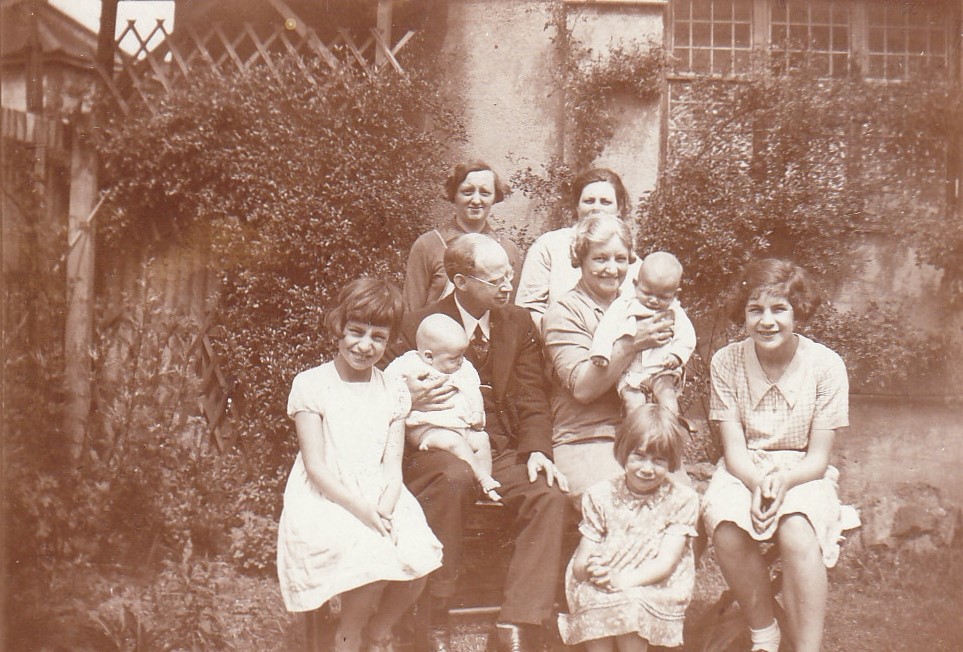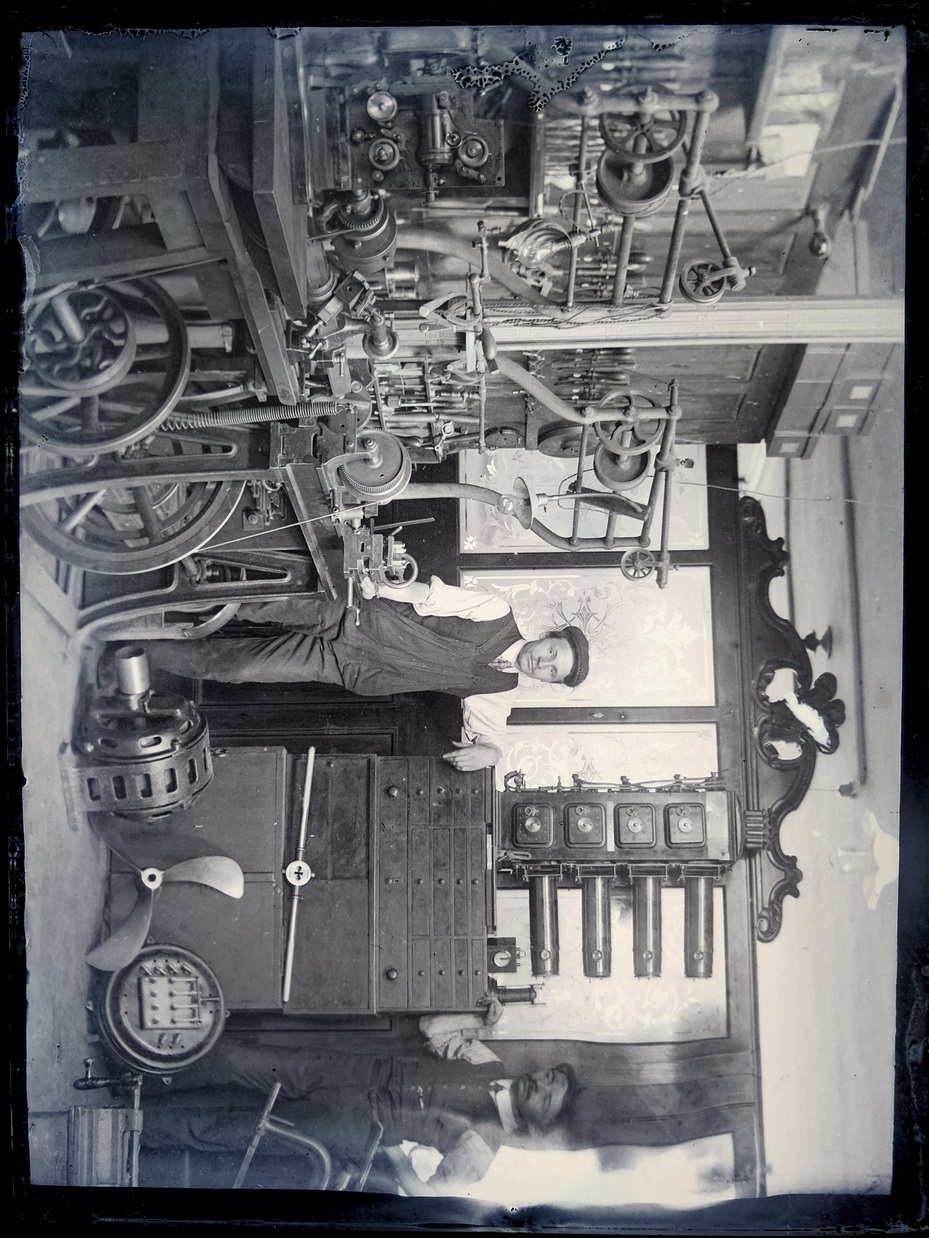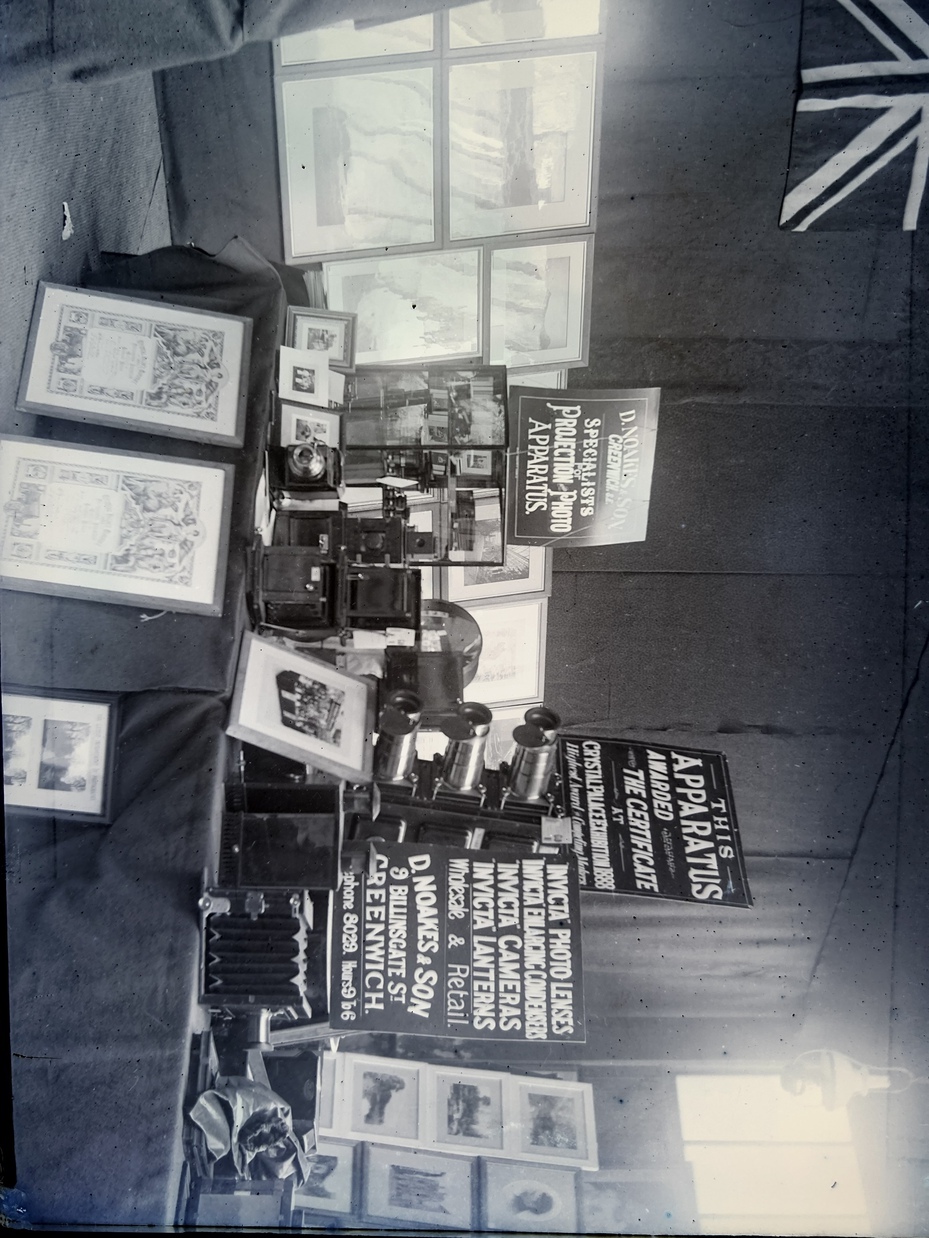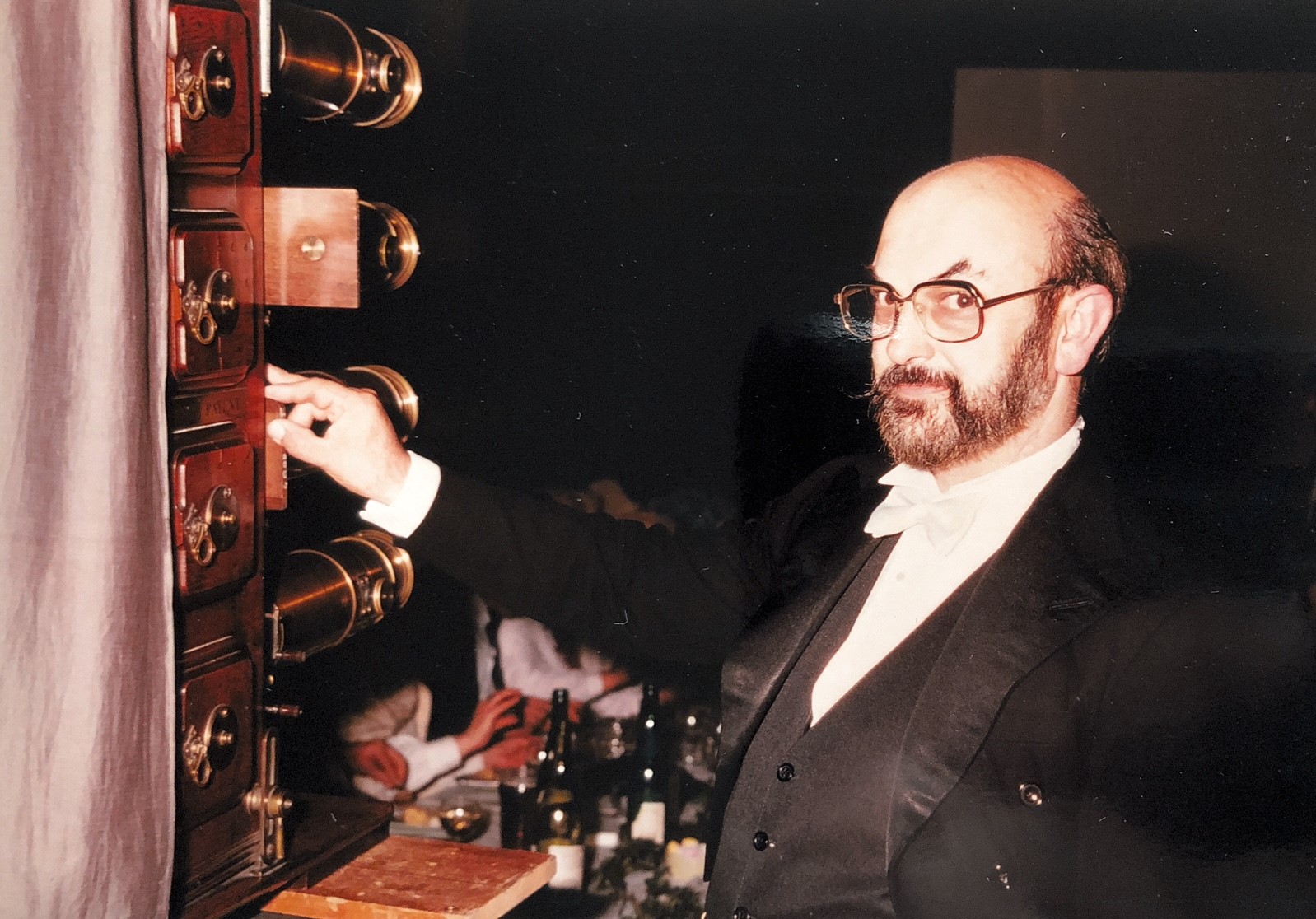Lots 41 to 78
Family Foreword
Yvonne Mashen and Lisa Harold, daughters of John Harold
The Noakes and Harold family friendship goes back many, many years as our Grandad (Alfred Harold, born 1902) helped David Noakes as a young boy and our Dad (John Harold) always referred to Mr Noakes as Uncle. Our Nan Eliza Harold and Florence Noakes were great friends (we have photos of Dad as a baby in 1937 with Nan and the Noakes family). Dad grew up with Gordon Noakes. Nan and Grandad originally lived in Lewisham and Forest Hill, London before moving to Manston in Kent so we assume the association pre-dates dad's birth by quite some while and they visited the Noakes family regularly at Southend-on-Sea. There is evidence they were related as Dad made an enquiry regarding his Great Uncle to Camberwell New Cemetery.

Gordon and Florence Noakes in the centre of the photo. The baby being held by Florence Noakes is John Harold (Dad). Behind Florence is Eliza Harold (Nan) and just in front her is Gwen (Auntie).
On Mr Noakes' death this collection of the lantern and large quantity of slides was left to my grandad Alfred Harold and on his passing to our Dad John Harold. Photographic evidence of Grandad and Dad operating the lantern at Hammersmith in 1961 appeared in the New Magic Lantern Journal (Autumn 2005) which is included in the first auction lot.
Dad started work at Kodak in the Lecture Service Department/Outside Show Presentation Service at Kingsway in London in 1962 as a Projectionist/Sound Recordist and went out doing shows here there and everywhere (including being called back from his honeymoon which didn't go down well!). During this time, he did also show the magic lantern to various associations and always lived in hope of doing more.
Technical Foreword
Dr Richard Crangle, author on magic lantern matters, Secretary and Treasurer of the Magic Lantern Society and developer of the Lucerna Magic Lantern Web Resource
At the first Magic Lantern Society Convention I attended in the early 1990s, I found myself admiring a fine triunial lantern, which looked to me like the absolute pinnacle of what could be achieved with brass, mahogany and multiple lenses. However older and wiser members set me straight, telling fantastic tales of another lantern which surpassed this, a grand machine with no fewer than four lenses. It was called ‘the Noakesoscope’ or ‘Noakes Quad’, after its maker David William Noakes (1859-1934), purveyor of lanterns and slides and giver of shows at high-class locations like the Royal Albert Hall and the Crystal Palace.
Unfortunately – rather like the unicorn, whose magical status this rare beast seemed to share – that glorious lantern had now vanished into the mists of time. Nobody knew where it was, and in the absence of any tangible evidence that it still existed, to a newcomer like me it began to seem like something that had been dreamed after too much toasted cheese and dissolving views.
Nonetheless there was a lot of interest among MLS members, and some older ones even claimed to have seen the device in action. Over the years many individuals followed up various lines of research, and in time I did a bit of digging myself. Several articles appeared in the Society’s Journal, and evidence began to emerge of the beast’s public appearances: at the National Film Theatre and Lyric Theatre Hammersmith in 1961; in a National Portrait Gallery exhibition in 1974; but then nothing further. My research in 2018 had led me to two conclusions: the lantern and its slides definitely still existed in 1994, in the care of someone who knew and understood them; and they probably still did exist.
It therefore came as a wonderful surprise – and then again, perhaps it wasn’t so surprising at all – when news began to circulate on the MLS grapevine that ‘an interesting magic lantern’ (Hugo Marsh’s wonderfully downplayed description) was coming to sale at Special Auction Services (SAS) in Newbury. That news subsequently turned into a fascinating day inspecting, photographing, puzzling over design features, and sorting some of the slides.
The lantern itself is in its original wooden carrying case, with additional boxes for lenses, illuminants and slides. For transport and storage, the enormous brass lens tubes are removed and carried separately; even so the lantern in its case is too large for a single person to move any distance.
Two groups of slides accompany the lantern. The first group comprises around 1500 wood-framed slides, in sets corresponding to the lectures Noakes gave in the 1890s: England Bisected by Steam Launch; The Victorian Era; Tamesis; Rambles in Normandy and Brittany and others. There are some dissolve sequences, including The Lodge and Channel Packet Leaving Dover that were mentioned in 1950s accounts by the poet John Betjeman and others. Apart from a few mechanical and other effect slides, these are all 3¼ inch square glass slides mounted in 7 x 4-inch wooden frames. They are now stored in large cardboard boxes, with a few in the (probably original) wooden carrying boxes seen in photos of the lantern in use in 1961. These were D.W. Noakes’s own lecturing slides – many are his own hand-coloured photographs, but augmented by commercial slides from other well-known makers.
The second group comprises approximately 5,000 3¼ inch slides, mainly photographic ‘views’ but including some transfer slides (Primus, Theobald etc.) of fairy tales and other entertainment subjects. These are housed in the typical long wooden storage boxes with hinged lids, with between 50 and 100 slides per box arranged in subjects and sets. These could have been collected by a later owner, but the subjects and way they are organised suggest the hire stock of a commercial supplier, quite possibly at least a remnant of the Noakes hire stock.
Just as exciting for a researcher are a number of photographs, negatives and papers. Some of these are very revealing: a view of Noakes’s workshop, including the quadruple lantern proudly on display, is packed with detail, and another of a Noakes display at a photographic exhibition shows a triunial among other lanterns and photographic items. There are also programmes for ‘Noakesoscope’ showings from the 1960s-80s, press cuttings relating to the Noakeses and the quadruple lantern, and odd papers covering things like D.W. Noakes’s year (1921-22) as President of the British Hay Traders’ Association.

Noakes workshop, with Quadruple lantern as built. The figure at the right may be D.W. Noakes himself (the emulsion on the negative is distorted), and the device on the bench top at left may be a film projector, suggesting a date after 1896 (digital positive from glass negative).

The slightly awkward name ‘Noakesoscope’ was apparently coined by John Betjeman on seeing the lantern in 1956. D.W. Noakes himself called it ‘a Quadruple projection apparatus,’ and within the Noakes and Harold families it seems to have been known as the ‘quadruple projector’ or ‘quad lantern’. It might be more accurate to refer to it as the ‘Noakes Quadruple’ or ‘Noakes Quad’ from here on.
I suggest that the lantern was built in or soon after 1897, for D.W. Noakes’s own use in his lecturing engagements. That date, paradoxically, coincided with his retirement as an optical manufacturer: an 1897 trade press account says that was because he took on more work for the family’s hay merchant business after his father’s retirement. In 1897 Noakes was planning to set up a “miniature workshop” at his new home, “so that when any idea pertaining to lanterns occurs to him he will be able to practically carry it out in a manner worthy of a lantern enthusiast.” It’s tempting to see the Quad lantern as just such a personal project, perhaps realising a long-nurtured dream.
Noakes’s son Gordon joined his father in his lecturing activities, eventually succeeding him in his role as ‘official lanternist’ at the Royal Albert Hall and taking over ownership of the Quad. David died in 1934 and both he and his wife Elizabeth are interred in Nunhead Cemetery. Gordon continued as a lanternist as a sideline to his main business as a ‘general and electrical engineer’ with a shop in London Street, Greenwich, apparently until the late 1940s or early 1950s. He retired to Southend-on-Sea, Essex, and continued to use the Quad for small domestic shows to visitors, including the 1956 visit from Betjeman.
Between 1956 and Gordon’s death in 1958 the Quad was given to Alfred Harold, a long-time friend of the Noakes family who also (according to David Francis) acted as Gordon’s projection assistant at the Albert Hall. The Harolds and Noakeses were close friends over many years, living at the same address in south-east London in the mid-1930s. Alfred’s son John (born 1936) stayed with the Noakeses in Southend as a child and later referred to Gordon’s wife Florence as ‘Auntie Noakes.’
Alfred Harold used the Quad (by then described as the ‘Noakesoscope’ in publicity) to give the public shows of 1961, assisted by John, and allowed its exhibition at the National Portrait Gallery in 1974. On or before Alfred’s death in 1981 the Quad passed to John, who worked as a projectionist and sound recordist for Kodak for many years. He continued to use the lantern and slides occasionally for ‘Victorian evenings’ and other charity shows in the counties around his home in Chesham, well into the 1980s. He also began to research the history of the lantern and the Noakes family.

John Harold using the Noakes Quad lantern at a performance in the 1980s (Harold family colection)
The lantern was put into storage in the mid-1990s, when John retired and the family moved to Cornwall: the lamps and lenses were removed and boxed, and the lamp chambers were packed with newspaper (dated 1995). The ‘Quad’ lantern and principal slides were clearly stored carefully: although a little dusty in places, most of the main slide collection is in good condition, with little damage to the slides and signs of damp only visible principally in one set, although handling does highlight the weak joints of the mahogany slide mounts, unsurprising after the passing of 125-130 years since David Noakes assembled his main slide collection. The secondary slide collection, generally dating from the 1890s to the outbreak of The Great War, with a few post-dating it, has been more heavily used and probably stored in a damp attic, as there is evidence of shedding binding tapes, sooty dust, glass damage, mildew and damp damage across this part of the collection.
Why only one? The most obvious question about the Noakes Quad is: if it genuinely was the only four-lens lantern ever made (there still seems to be no evidence of another), why?! D.W. Noakes was a successful commercial lantern builder with a reputation for quality and a penchant for publicity – did nobody else want their own ‘extra special’ lantern?
Perhaps Noakes wanted to keep such a special design to himself. As a lanternist he was not shy of big spectacular occasions and a big spectacular lantern might have fitted into that sensibility. But there was little contemporary celebration of the Quad – for example the 1897 interview does not mention it, when surely it would have been worth a line or two as the highpoint of Noakes’s achievements. But if it was made in or after 1897, Noakes was no longer a commercial lantern maker, and there would have been no need to advertise widely a personal project for its maker’s own use.
Perhaps the Quad had ‘arrived too late to the party’. If its construction was ‘in or after’ 1897, the Quad would have been built at a time when all the investment money and most of the technical effort in the optical area was going into improving cinematographs, and few if any big spectacular lanterns were being developed. Without intending to restart the ‘death of the lantern’ fallacies that used to hover around the equally problematic ‘birth of the cinema’, in the years around the turn of the 20th century elaborate dissolving-view entertainments, which would have been the Quad’s main raison d’être, were no longer an expanding market.
Perhaps it was also a question of ease of use, or lack of it, compared to whatever advantage four lenses would give. Cursory examination of Noakes’s lecture slides does not find many obvious four-stage dissolve sequences (The Lodge is one exception) – probably because the slides pre-dated the Quad lantern and were originally used with a triunial. There must have been some sequences that would benefit from the extra lens (or else why build it?), but it would add another level of difficulty to an already tricky process.
Relatively few lanternists – generally only those with well-established skills and experience, not to mention finances – operated even a triunial. It must have been a challenge to juggle four images, almost certainly requiring two operators collaborating very closely. Without such a team (for example, a father and son) perhaps the added complexity would have just seemed too much trouble to consider.
[Adapted by permission from an article in The Magic Lantern, the quarterly journal of the Magic Lantern Society, issue 30 (2022)]
Presentation of the ‘Noakes Quad’ Magic Lantern and Associated Slides
The ‘Noakes Quad’ will be offered with the principal collection of approximately 1,500 mahogany-mounted 3¼in sq and other Magic Lantern Slides directly related to David Noakes, with associated artefacts and ephemera, as Lot 41.
The secondary collection of approximately 5,000 3¼in sq Magic Lantern Slides, which appears to be from diverse sources - although some slides appear to mirror the titles and contents of the principal collection with some titles possibly in David Noakes’ hand - will be offered separately as Lot 42 to Lot 78.